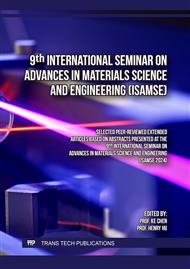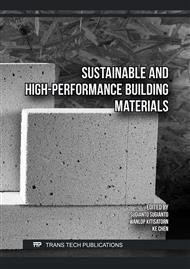p.45
p.53
p.65
p.77
p.85
p.95
p.103
p.111
p.119
Study on the Mechanical Properties of High-Toughness Concrete Hollow Wall Panels Prepared with POM Fiber
Abstract:
With the acceleration of urbanization and the expansion of densely populated areas, the safety and durability of building structures in metropolitan areas have become increasingly significant issues. This trend has raised the requirements for building materials, particularly in the production of prefabricated building components, where the use of high-strength, high-toughness concrete has become the norm. Using high-toughness concrete reinforced with organic fibers can enhance the mechanical properties of concrete while ensuring good workability, and POM fibers are among the most widely used organic fibers. This study primarily investigates the mechanical properties of prefabricated hollow wall panels made from high-toughness concrete reinforced with POM (polyoxymethylene) fibers. The mechanical behavior of POM fiber-reinforced concrete was analyzed through laboratory tests, including assessments of compressive and tensile properties. The results indicate that the inclusion of POM fibers significantly improves the maximum elastic compressive strength and ultimate compressive strength of the concrete, as well as enhancing its tensile capabilities. Using the CDP model theory in finite element analysis, this study further calculated the structural response of high-toughness concrete prefabricated hollow wall panels under wind and seismic loads, demonstrating their practical feasibility in engineering applications. This research not only provides a scientific basis for the application of POM fiber-reinforced high-toughness concrete but also offers new directions for future research and application in building materials, particularly in urban constructions requiring high safety and durability.
Info:
Periodical:
Pages:
119-125
Citation:
Online since:
December 2024
Authors:
Price:
Сopyright:
© 2024 Trans Tech Publications Ltd. All Rights Reserved
Share:
Citation:



